28 Telecaster legends: part 2
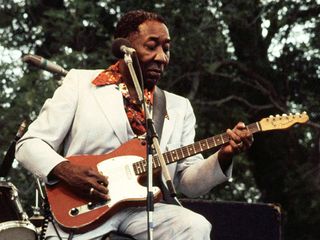
Muddy Waters
Welcome to part two of our 28 Telecaster Legends extravaganza. Part one, featuring artists as diverse as Polly Jean Harvey and Jimmy Page, can be found here. Part two begins with one of the most influential guitarists of all time and a genuine raw blues originator in the shape of Muddy Waters.
Although McKinley Morganfield played instruments made by Gretsch, Stella, Harmony and Gibson in his early career, it's the stinging attack of a Telecaster bridge pickup that defined his sound.
Muddy's main Tele right up to his death in 1983 consisted of a '50s ash body refinished in red coupled to a '60s neck with a rosewood 'board. Other distinctive features included additional screws to stop the pickguard buckling and amp-style control knobs, the legendary bluesman switching to an all-brass bridge in later years.

Jerry Donahue
If Danny Gatton calls you "the string-bending king of the planet", you must be doing something right.
Heavily influenced as a teenager by seeing Gerry McGee bend strings behind the nut, Donahue would later relocate to the UK and become a respected figure in the UK folk rock scene, playing with Fairport convention, amongst others.
Since then, Donahue has recorded and performed with numerous stars and his work alongside John Jorgenson and Will Ray in the Telecaster-toting Hellecasters is compulsory listening for fans of outrageous twang. Get some killer string-bending tips from the man himself in this video lesson.
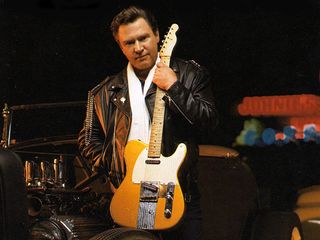
Danny Gatton
Part of the great power of musicians is that they can offer listeners a look into their souls. In the case of the late Danny Gatton, this was a cathartic and ultimately heartbreaking experience.
For years the Washington DC native was called ‘the world’s greatest unknown guitar player.’ So prodigious were his skills - if he didn’t have a slide, a mug of beer would do just fine - that he was also named ‘The Humbler.‘ Pity the axeman who would go up against him in a jam session.
Gatton’s potent blend of blues, bebop, jazz and rockabilly all came together on 1987’s Unfinished Business, on which he hybrid picked his way through dazzling originals as well as near-definitive versions of Sleepwalk and Melancholy Serenade (The Jackie Gleason theme). Gatton mostly played a 1953 Telecaster with Joe Barden pickups. In 1990 Fender introduced a Danny Gatton signature model, based on his ’53.
On 4 October 1994, Gatton locked himself in his garage and shot himself. He left behind no explanation for his suicide.

John 5
To say that Marilyn Manson and Rob Zombie sideman and solo star in his own right John 5 likes Telecasters is something of an understatement. His personal collection is extensive, featuring several clean 1950s examples, and Fender have so far honoured him with three signature models, the latest being this Squier.
Hear him talk about Telecasters here in our podcast, or get some shredding tips from the man himself in this video lesson.
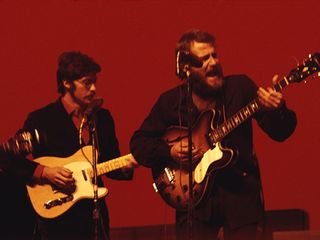
Robbie Robertson
Widely associated with Stratocasters during his tenure with The Band, Robbie Robertson cut his musical teeth on Telecasters.
During his early days in Ronnie Hawkins’s band (a time when he received priceless mentoring - nay, tutoring - from another Tele legend, Roy Buchanan), Robertson favored blonde models - although he switched back and forth freely between maple and rosewood necks.
While backing up Bob Dylan in the pre-Band band The Hawks - as seen in this great compilation clip from 1966 - he stuck to rosewood. Check out his playing - snaky, twangy licks, wrapping around the vocals like ivy on fence.
Robertson claims that his workhorse Band-era Tele was stolen, thus hastening his move to Stratocasters. Maybe it’s the one pictured here (he’s playing beside an Epiphone Riviera-toting Levon Helm), which sports a maple neck. Clearly, the man liked to keep his options open.
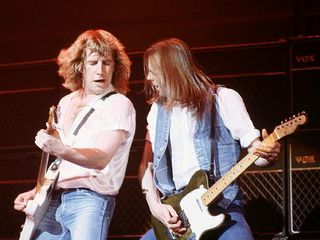
Status Quo
Okay so the list says 28, but it seemed unfair to choose one of the Telecaster-toting Rossi and Parfitt combo over another.
Francis’s green ’57 and Rick’s white ’65 model have both been heavily modified to withstand the rigours of decades of pumping out the hits. While neither player is as fleet-fingered as many in this list, sometimes a no-nonsense rock ‘n’ roll boogie is worth a thousand virtuoso wig outs. Accept no substitute.
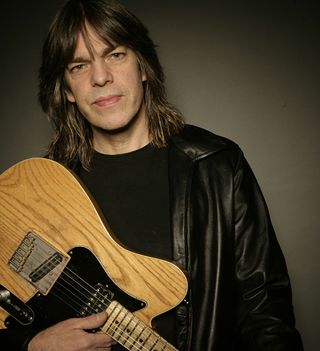
Mike Stern
One of the world’s finest modern-day jazz guitarists, Stern studied at the Berklee School Of Music before landing a gig with Blood, Sweat & Tears at the age of 22.
More illustrious credits would follow: after playing in drummer Billy Cobham’s powerhouse fusion band, in 1981 he was handpicked by Miles Davis for the jazz master’s group. Stern then went on to tour with bass legend Jaco Pastorious. He would eventually return to Davis in 1985, the same year the guitarist released his first solo album, Neesh.
While continuing to issue warmly received albums of his own, the Grammy-nominated Stern has worked with The Brecker Brothers, David Sanborn, Pat Martino and Steps Ahead, among others.
Although he's a Yamaha signature artist these days, for years Stern played a custom-built guitar that featured a Telecaster-style body and a ‘50s Broadcaster neck (Seymour Duncan humbucker in the neck position, Bill Lawrence single-coil in the bridge). This replaced an original ‘50s Tele that was stolen from him in an armed robbery.
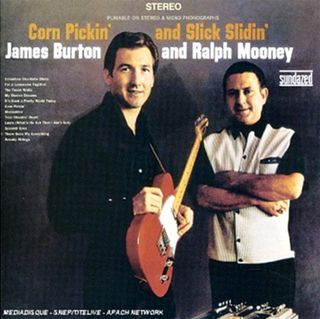
James Burton
There were guitar stars before him, but when James Burton strapped on a Telecaster and introduced the world to chicken pickin’, the concept of the guitar hero was born.
His first success came with Dale Hawkins on the 1957 hit Suzie Q. After that, Burton gained considerable acclaim on both sides of the Atlantic for his six-year-stint in Ricky Nelson’s band. (Check out this 1965 clip from Shindig, in which Burton’s massive stature in the UK is mentioned.)
Blessed with supreme taste and skill, Burton, perhaps more than any other guitarist (his resume boasts names such Elvis Presley, John Denver, The Monkees, Joni Mitchell, Merle Haggard, Elvis Costello, amongst many more), is that rare breed of sideman whose contributions aren't mere ornaments.
Throughout his career, Burton has relied on Telecasters, two in particular: a 1953 Candy Apple Red model, and a 1969 ‘Pink Paisley’. Both guitars inspired Fender signature models.
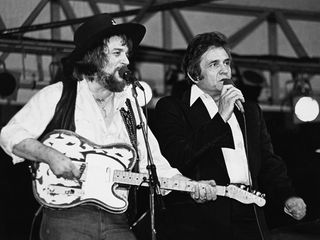
Waylon Jennings
A protégé of Buddy Holly, Waylon Jennings played bass in Holly’s post-Crickets band and almost took that fateful plane ride - he cheated death by giving his seat to The Big Bopper.
After Holly’s passing, Jennings moved to Nashville, where his imposing baritone and stripped-down, gritty honky-tonk guitar approach gave birth to the ’outlaw country’ movement.
Jennings’s renegade image was cemented in the early ‘70s when he recorded material by the then-unknown Kris Kristofferson. Later that decade, he collaborated with Willie Nelson on a number of songs, including the chart-topping Mammas Don't Let Your Babies Grow Up To Be Cowboys.
In the mid-‘80s, Jennings, Kristofferson, Nelson and fellow country bad boy Johnny Cash formed The Highwaymen. The fearsome foursome had a No. 1 hit with a tune called - what else? - Highwayman.
Always a man of fashion, Jennings’ Teles, particularly his ‘53 model, were adorned with decorative leather ‘saddle’ covers. His instruments remained stock until the ‘80s when he experimented with EMG pickups. Waylon Jennings died on 13 February 2002.
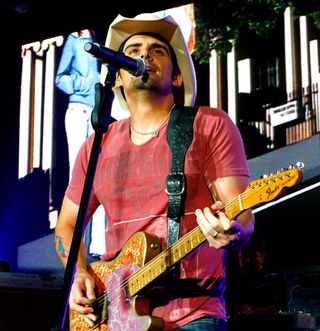
Brad Paisley
Despite being just 37 years of age at the time of writing, there's a good chance that Brad Paisley has won more awards than the rest of the players in this list combined. Such is the enduring popularity of country music, and the owners of any raised eyebrows should note: he can certainly play.
Given his fondness for country twang, it's no surprise that Mr Paisley is a Telecaster fan, with one of his favourites an original '68 Paisley Fender model. He also plays Crook Custom models.
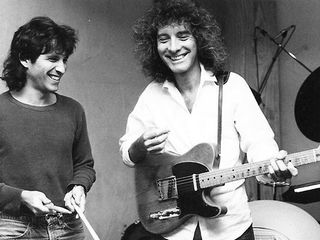
Albert Lee
Eric Clapton once called him “the greatest guitar player in the world.” Who are we to argue with God?
Heavily influenced by Buddy Holly, Cliff Gallup, Scotty Moore and Jerry Reed, Lee’s unique blend of fingerstyle, hybrid and chicken pickin’ - the man can play with dazzling speed and shift to slower, pedal-steel-like passages at the drop of a hat - has made him an in-demand player since the ‘60s.
His peerless technique coupled with an ‘aw, shucks’ lack of ego has led to gigs with a Who’s Who of popular music: Eric Clapton, Bo Diddley, The Everly Brothers (whom he helped to reunite), Jerry Lee Lewis, The Crickets, Emmylou Harris, Bill Wyman’s Rhythm Kings, not to mention the all-star Hogan’s Heroes. (Here he's pictured with drummer Rod Morgenstein, with whom he played while cutting a track with Steve Morse.)
Although now a Music Man endorsee, Lee’s seminal recordings were played on Telecasters with maple necks. Models from 1952, ‘53 and ‘60 were his favorites. On occasion, Lee has been known to employ a B-bender, a mechanism he still uses today on some Music Mans.
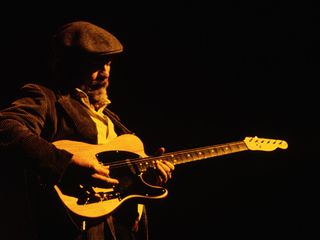
Roy Buchanan
A true master of the instrument, Buchanan's virtuoso Telecaster workouts were hugely influential, yet since his untimely death in 1988 he has remained a marginal figure compared to 'premier league' players like Page, Beck and Hendrix.
The key to Buchanan's sound was largely 'Nancy', a '53 Telecaster played through a cranked Fender Vibrolux: a firece, trebly combination that facilitated his pioneering use of pinch harmonics, or 'overtones' as he called them.
For the uninitiated, The Messiah Will Come Again is an astonishing showcase of his talent.
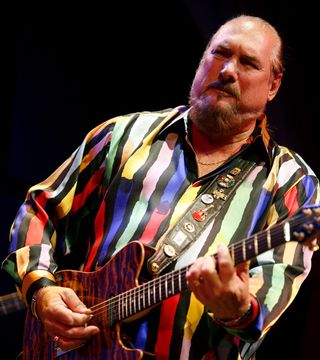
Steve Cropper
Plenty of guitarists play ‘in the pocket,’ but as a member of the famous Stax Records house band, otherwise known as Booker T & The MGs, Steve ‘The Colonel’ Cropper pretty much invented the term.
His unique manner of weaving soulful rhythms and hooky lead lines (think Soul Man) throughout vocals can be heard on dozens of hits by the likes of Sam & Dave, Wilson Pickett, Rufus Thomas, Carla, and most notably on Otis Redding’s (Sittin’ On) The Dock Of The Bay. (Cropper not only co-wrote the smash with Redding, he produced the track.)
Booker T & The MGs racked up hits of their own, but following their breakup, Cropper, along with Booker T bassist Donald ‘Duck’ Dunn, rose to a new level of fame as a member of The Blues Brothers Band, backing Dan Aykroyd and John Belushi on TV, albums and in a big-budget movie.
Cropper has played a variety of Telecasters, but his main Stax studio axe was a 1956 white blonde Esquire. He would eventually replace single-coil pickups with humbuckers on later Teles.
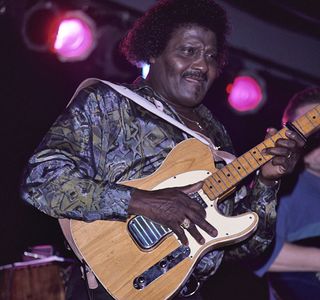
Albert Collins
The Ice Man. Master of the Telecaster. The Razor Blade. All were nicknames given to Albert Collins, and with his sharp, fingerpicked attack informed by both Chicago and Mississippi blues styles, he earned every one.
A total original, famous for his ‘guitar walks’ through the audience (he would sometimes perform with cables over 150 feet long), Collins’s approach (guitar tuned to an open F-minor - F-C-F-Ab-C-F - and capoed at the 5th, 7th or 9th frets) was as distinctive as his instrument: a 1966 Telecaster with a Gibson PAF humbucker in the neck position.
For decades Collins toiled in relative obscurity, but in the mid-’80s he road the crest of the blues revival and shared a Grammy with Robert Cray and Johnny Copeland for the album Showdown!. A year later, his Grammy-nominated Cold Snap went down as one of his finest.
Cited by the likes of Coco Montoya, Gary Moore, Stevie Ray Vaughan, Jonny Lang and John Mayer as a major influence, Collins died from liver cancer on 24 November 1993.
Click here for 28 Telecaster legends: part 1

MusicRadar is the internet's most popular website for music-makers of all kinds, be they guitarists, drummers, keyboard players, DJs or producers.
GEAR: We help musicians find the best gear with top-ranking gear round-ups and high-quality, authoritative reviews by a wide team of highly experienced experts.
TIPS: We also provide tuition, from bite-sized tips to advanced work-outs and guidance from recognised musicians and stars.
STARS: We talk to artists and musicians about their creative processes, digging deep into the nuts and bolts of their gear and technique. We give fans an insight into the actual craft of music-making that no other music website can.
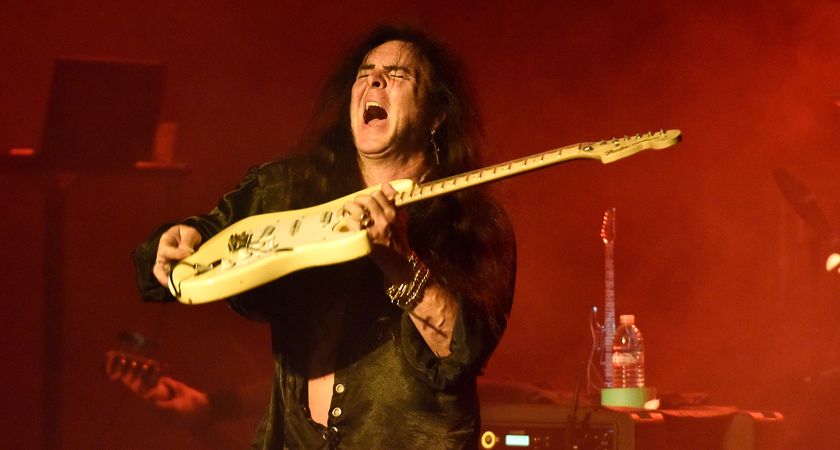
“Those arpeggios... That was the sickest thing I ever heard”: Yngwie Malmsteen on why guitarists should take inspiration from players of other instruments if they want to develop their own style
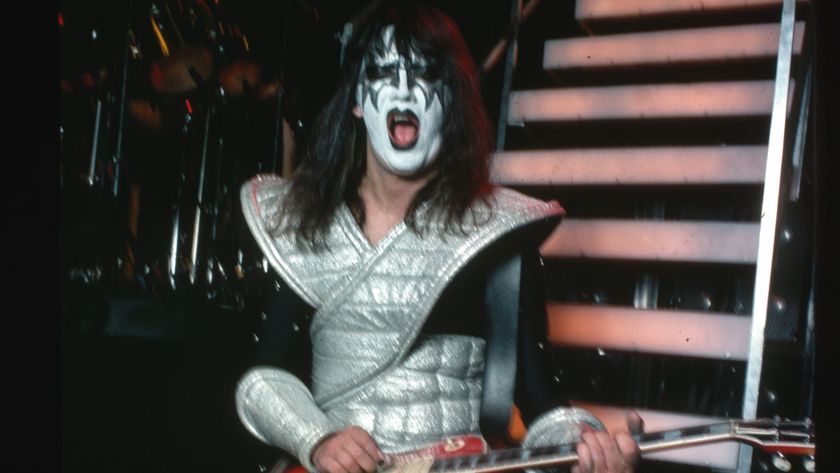
“I used a flange on the main riff and a wah-wah on the solo. I just said, ‘Hit the record button and I’ll let it rip!’”: Kiss legend Ace Frehley on his greatest cult classic song

“Those arpeggios... That was the sickest thing I ever heard”: Yngwie Malmsteen on why guitarists should take inspiration from players of other instruments if they want to develop their own style

“I used a flange on the main riff and a wah-wah on the solo. I just said, ‘Hit the record button and I’ll let it rip!’”: Kiss legend Ace Frehley on his greatest cult classic song









